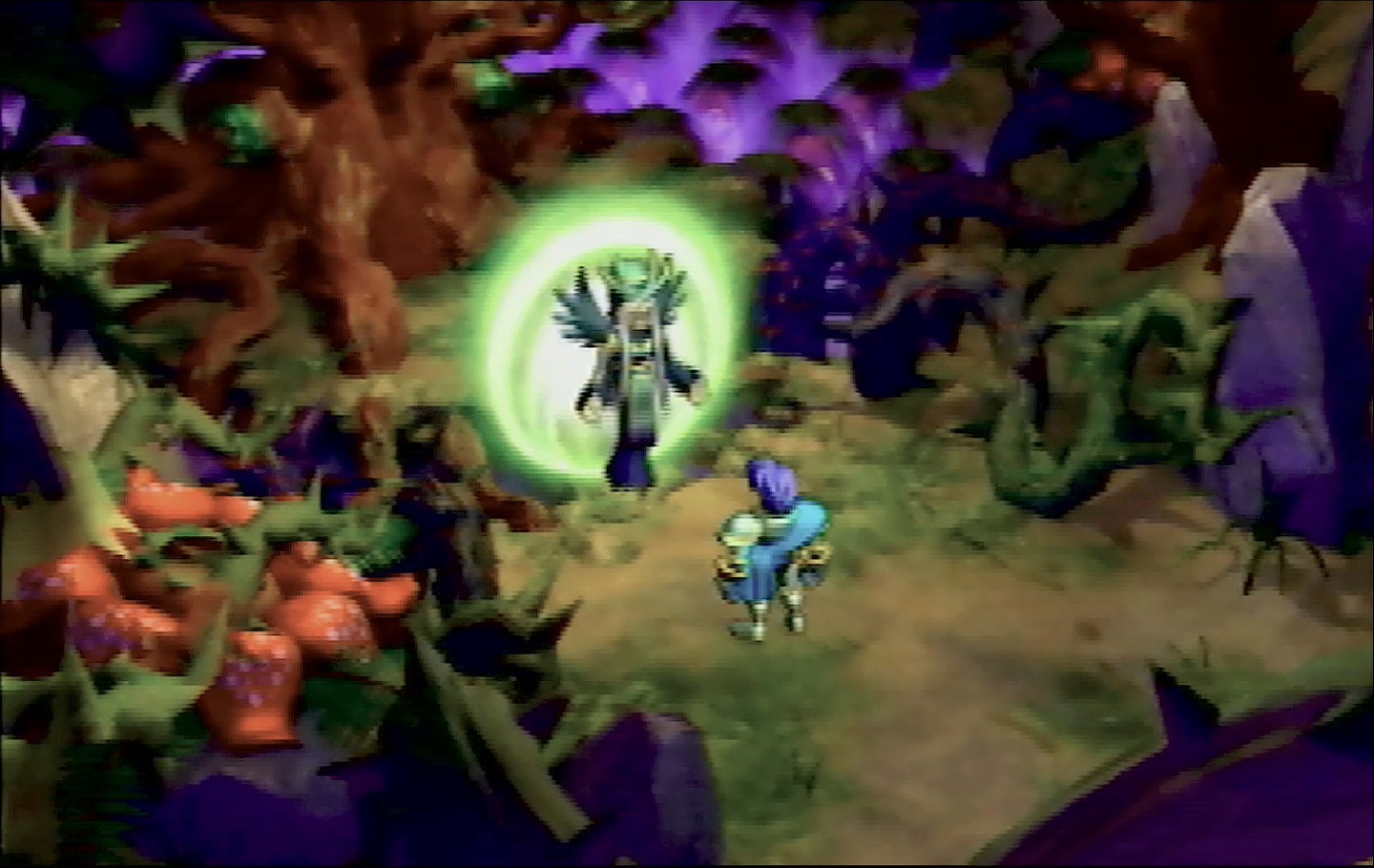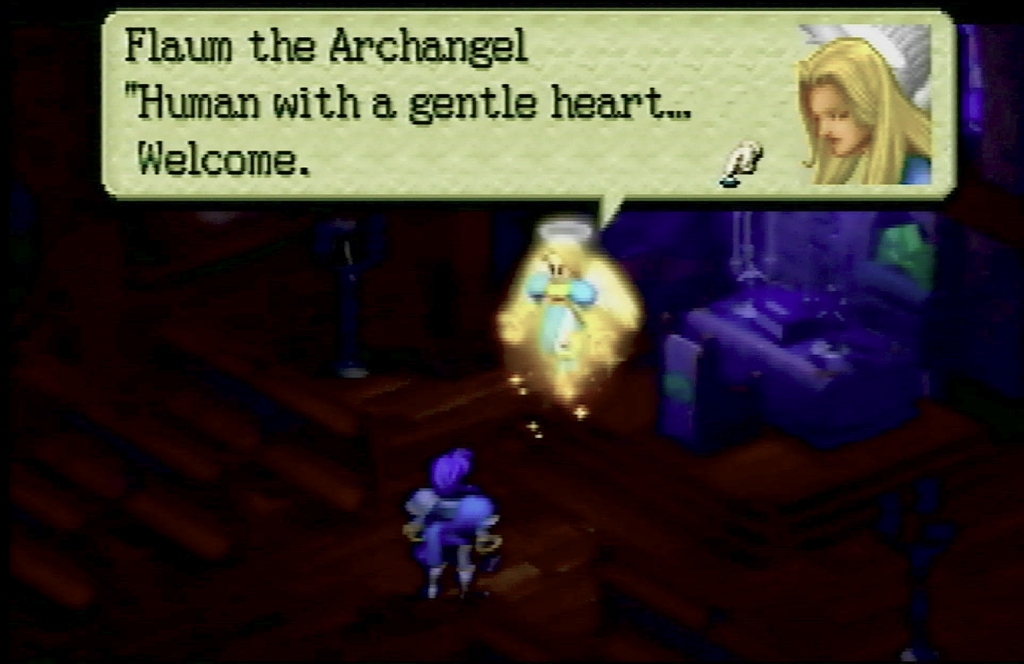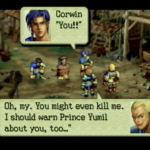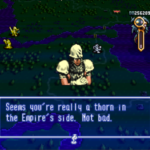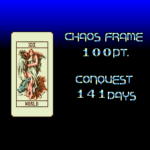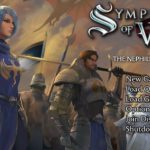Jusssst about 51 hours, though I went back in later and finished some side quests. Is this worth picking up for your Nintendo 64?
Almost every review, maybe EVERY review, of recent tactical battler Symphony of War, mentioned that it was carrying a torch first lit many, many years ago by the Ogre Battle series, and seen seldom since. Tactics battlers aren’t rare at all, but those where you build an army comprised of many separate squads which you can direct but battle on their own, are rare.
The Ogre Battle series — March of the Black Queen for the Super Nintendo, and Person of Lordly Caliber for the Nintendo 64 — are both real time, squad-based tactics battlers, both with deep and involving storylines. The stories are loosely connected both through this Ogre Battle series, and the Tactics Ogre series, and some characters appear in both. (The player character in March of the Black Queen is even recruitable in Person of Lordly Caliber).
Both games track a hidden value called a Chaos Frame to select one of the possible endings. In this game, doing things to free the subjugated populations and liberating strongholds with a morale matching that of the liberating unit raise it; allying yourself with the occupying powers and capturing strongholds with units with alignment different from the stronghold lower it. Both have advantages, and many players play through twice.
The chaos frame is separate from the alignment of each character, which rises and falls based on how honorably they fight, if they liberate strongholds instead of capturing them, if they attack weak enemies or strong ones, and so on. It’s important to have units that have a variety of alignments so that good aligned units don’t have to sully themselves with the unwanted, but necessary, dirty work.
In play playthrough, the protagonist’s unit was a Chaos unit, and his buddy Dio’s unit was a Law unit, while a third unit tried staying more neutral.
The plot was very political. The hero’s father is an advisor to Prince Yumil, the crown prince. He was once accused of a cowardly murder in order to protect the young prince, and still bears that shame. The hero tries to hide his ties to his father while doing his best to be assigned to a distant military post where nobody knows him.
He helps to quell a rebellious uprising that threatens to upend and erase the class system entirely, but when he has the rebel leader in front of him, at his mercy, ordered to take his head — he frees him instead. And depending on your actions to that point, one ore more units in your battalion may join you, or cut ties.
As the rebellion gains strength, the empire is forced to up its power level to fight them, eventually allying themselves with evil. The hero eventually realizes that he, by so efficiently defeating the empire and making them turn to increasingly desperate measures to preserve their own culture, is in some way responsible for unleashing evil on the land. And so goes the plot from there.
I became obsessed with getting the best ending. I made so many mistakes, but the guides and walkthroughs promised that, by being very careful, it might be possible to save a decent ending from the all the bad decisions I’ve made. The maddening thing is that, through all this, I would have no idea if I was actually making progress. Until I saw the final score screen, I thought I was headed for the second worst ending, rather than the best.
Like its predecessor, Ogre Battle 64 has a LOT of hidden secrets, classes, characters, quests and so on. Without using guides, I’d have missed most of them, maybe all of them. It is technically possible to get clues by revisiting strongholds after you have finished the mission, perhaps with certain characters in the party, perhaps at a certain time of day or certain day of the month or… I have no idea how people ever found these things. I’m guessing there was a strategy guide that listed them. (I just checked: there was, in fact, a strategy guide that listed them. I could get my own copy of that guide for about $150, or more if I felt like I needed less money).
With the Chaos Frame, Ogre Battle 64 requires you to carefully consider the costs of your revolution and to try and soften the impact of the war for the noncombatants. In the games later missions, I mostly avoiding bringing the war to even occupied cities and towns. I understood that finishing the mission would free them all without me bringing the fight to them.
There’s still never been a tactics battler quite as intricate as the Ogre Battle series. Symphony of War took the mechanics without taking much of what made the games special. Still, it got me to go through the trouble of obtaining it and getting it working on my ancient N64, so I have to thank it for that.
The game lets you customize your units in many, many ways. None of the ten units in my battalion resembled each other in the slightest. The protagonist’s group focused on a melee front line with a sorceress and an archmage combining their powers in back — there wasn’t even a healer. I had to use healing items.
The second squad was more traditional, with a melee front line, a healer, and a Princess, a caster class that also grants additional attacks to the squad. My third squad was led by a healer, with damage largely done by archers.
The protagonist squad was boosted in power by training, which the overpowered mechanism of quickly gaining levels in exchange for money. It is also the way you get more rechargeable powers called Pedras. You start off with one; in the end, you can have six, and they are a fantastic method for lower powered units to take on more powerful enemies, as sometimes you are required to do.
If you’re a strategy tactics battle fan, and you have a way to play Nintendo 64 games — you should look this one up. I haven’t enjoyed a tactics game this much since Octopath Traveler, and there really are very few games like it.
